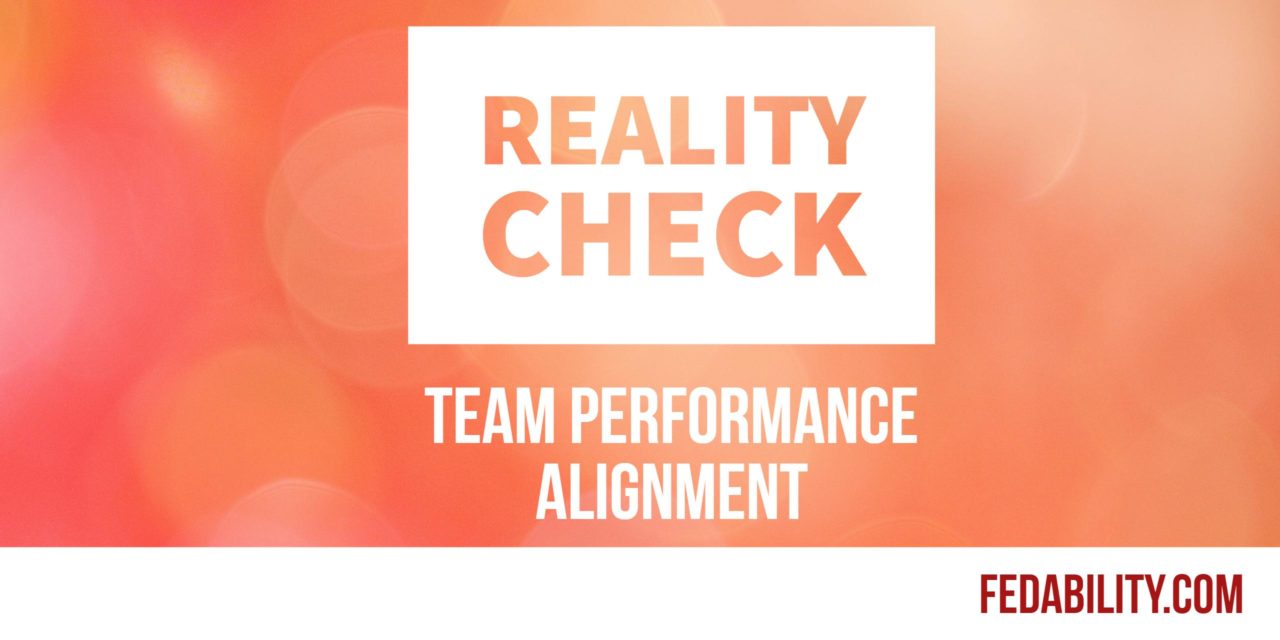Most agencies are finishing up the mid-year performance period. In doing so, you’ve been asked to review each team member’s performance appraisal and their accomplishments. Then, you likely met with each member of the team to let them know where they stand. What you probably didn’t do is reality check of team performance alignment.
For our purposes, team performance alignment is the comparison of a rating of the overall team, the cumulative team member ratings, and the manager rating.
Why do a reality check of team performance alignment?
The value of a functioning team is that the cumulative performance of each individual is greater than the sum of the individuals. And, given that a true manager’s job is about facilitating team performance, I would argue that the leader’s performance is no greater than the performance of the team.
Now, I can debate for hours on whether a ‘team’ is really a team. But the sum of my assessment is that most ‘teams’ are not teams, they are a group of individuals that have been asked to work on related work. But, you don’t have to take my word for this. Instead, let’s let the math speak for itself.
Which rating scale to use?
For ease of translation, let’s use the rating scale that is native to your particular agency. It may be a scale of 1 to 5, or 1 to 4.
A rating of 1 usually means unsatisfactory performance. And, the highest rating translates to exceptional performance.
Elements of team performance alignment assessment
Overall team performance
Let’s imagine that a new rating is needed. Instead of just individual member ratings, you also had to give a team rating. Using the same scale as for an individual, I’d ask that you give a single rating for the whole team using the same numerical scale as you use for individuals.
A number may pop into your mind. And, that’s ok. But, you will need to think a little deeper to justify that number.
However, if you’re a little more analytical, you might want a little more structure before you give a rating.
One approach might be to use the same elements that each team member is rated on. Rating each element. And then calculating that final score.
For instance, my team is rated on three elements. Each element also has a particular weighting for the overall score.
- Leadership (15%)
- Talent development (50%)
- Human capital (35%)
Take a moment and calculate the numerical rating you would give for your team.
Next, write down some justifications for the rating. Similar to how you would for an individual.
Once complete, let’s move on to the next element.
Cumulative individual ratings
Now, as I mentioned, a truly functioning team should perform better than the sum of its individuals. And, if it doesn’t then either it isn’t a real team or it isn’t functioning properly. So, let’s take a look at the cumulative rating of your individual team members.
If your mid-year evaluations required you to give an individual rating, then use those. Most agencies I suspect do not require this. If that’s the case for your agency, go back to the end-of-year ratings assigned to each team member.
For now, let’s do a rough calculation.
Add up the overall score of each individual and divide it by the number of people on the team.
Manager rating
As a final step, pull out your own end-of-year performance rating.
What’s that number?
Checking team performance alignment
Let’s line the three numbers up now and see whether they align.
Hypothetically, you might have on a scale of 1-5:
- Overall team: 3.5
- Cumulative individual ratings: 4.2
- Manager rating: 4.7
Next week, we’ll get into how to interpret this alignment.
In the meantime, why not share in the comments how you’d interpret this.





